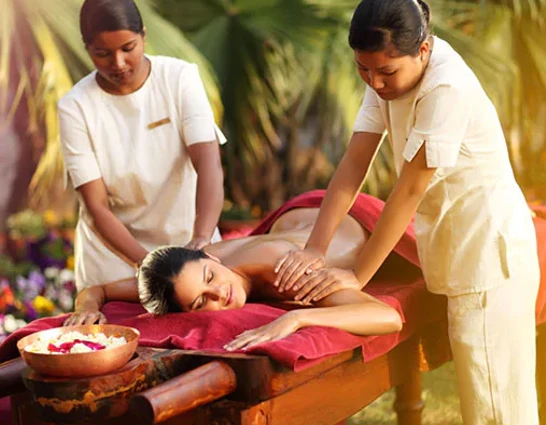In the hustle and bustle of modern life, our bodies and minds are constantly exposed to stress, pollution, and imbalances that affect our overall well-being. While conventional medicine often focuses on treating symptoms, Ayurveda offers a more holistic approach to health, one that aims to balance the body, mind, and spirit. One of the most profound and effective treatments in Ayurvedic healing is Panchakarma, a set of detoxification therapies designed to cleanse the body, rejuvenate the mind, and restore harmony.
What is Panchakarma?
Panchakarma, which translates to “five actions” or “five therapies” in Sanskrit, is a detoxifying process that involves a series of Ayurvedic treatments aimed at cleansing the body of accumulated toxins, known as ama. These toxins can build up due to poor diet, stress, environmental factors, and unhealthy lifestyle choices. Panchakarma seeks to remove these impurities, rejuvenate the tissues, and restore the body’s natural balance.
The five main procedures of Panchakarma focus on different parts of the body to bring about a comprehensive and deep cleanse:
- Vamana (Emesis Therapy) – This involves therapeutic vomiting to expel excess mucus and toxins from the upper respiratory and digestive systems.
- Virechana (Purgation Therapy) – A detoxifying therapy that involves the use of herbal medicines to cleanse the bowels, removing impurities from the digestive tract.
- Basti (Enema Therapy) – A treatment where herbal oils, decoctions, and liquids are introduced into the colon to cleanse the digestive system, regulate bowel movements, and eliminate toxins from deep within.
- Raktamokshana (Bloodletting) – A less common but potent therapy that involves the controlled removal of a small amount of blood to purify and rejuvenate the body. It is especially beneficial for individuals with certain skin conditions or blood disorders.
- Nasya (Nasal Therapy) – The administration of medicated oils or powders through the nostrils to cleanse the sinuses, head, and neck region, helping to clear blockages and improve mental clarity.
Why Panchakarma?
Panchakarma goes beyond mere detoxification. It is a comprehensive treatment that revitalizes the entire system, promoting not only physical health but also emotional and spiritual balance. Some of the key benefits of Panchakarma treatments include:
1. Detoxification
The primary goal of Panchakarma is to eliminate toxins from the body. Toxins can accumulate in various tissues and organs, leading to discomfort, disease, and aging. By cleansing the body of these harmful substances, Panchakarma supports overall health and vitality.
2. Balancing the Doshas
In Ayurveda, the concept of doshas (Vata, Pitta, and Kapha) governs the functioning of the body and mind. Panchakarma helps balance these doshas by addressing imbalances in the body, thus promoting harmony and reducing stress.
3. Boosting Immunity
Regular Panchakarma treatments can enhance the body’s immune system by stimulating the removal of toxins and strengthening the internal systems, leading to improved resistance against diseases.
4. Stress Reduction and Mental Clarity
Ayurvedic therapies, including Panchakarma, focus on calming the nervous system, promoting relaxation, and reducing mental fatigue. This not only helps with stress but also improves mental clarity, focus, and emotional stability.
5. Skin Health
As Panchakarma cleanses the body of toxins, it also has profound effects on the skin, making it glow and look younger. Many skin disorders, such as acne, eczema, and psoriasis, can be alleviated through these treatments.
6. Anti-Aging Effects
By rejuvenating the body, nourishing the tissues, and promoting optimal circulation, Panchakarma treatments help slow down the aging process, both internally and externally.
The Panchakarma Process: What to Expect
Before undergoing Panchakarma treatment, a thorough consultation with an Ayurvedic practitioner is essential. The practitioner will evaluate your unique constitution (Prakriti), current imbalances (Vikriti), and medical history to tailor the treatments to your needs.
Panchakarma treatment typically occurs in several stages:
- Preparation (Purvakarma) – Before the detox process begins, the body needs to be prepared. This includes oil massages (Abhyanga) and steam therapy (Swedana), which help loosen toxins and prepare the body for the detoxification process. These treatments also promote relaxation and improve circulation.
- The Cleansing Process (Pradhanakarma) – This is the core of the Panchakarma treatment and involves the five main therapies mentioned earlier. Depending on the individual’s needs, the duration of each therapy varies.
- Post-Care (Paschatkarma) – After the detox, the body requires gentle care to maintain the benefits of the treatment. This includes special diets, herbal supplements, and lifestyle adjustments to support the healing process and prevent the reaccumulation of toxins.
Panchakarma for Everyone?
While Panchakarma is a transformative treatment for many, it’s not suitable for everyone. Pregnant women, those with severe medical conditions, or individuals with certain chronic diseases should consult with their doctor or an experienced Ayurvedic practitioner before starting the treatment. It’s important to approach Panchakarma with the guidance of a trained professional who can ensure that the treatment is safe and effective for you.
Conclusion
Panchakarma is much more than a detox—it is a holistic therapy that rejuvenates the body, mind, and spirit. By following this ancient Ayurvedic cleansing process, you can restore balance, improve health, and achieve a state of vitality and well-being. Whether you’re seeking to address specific health concerns or simply want to enhance your overall wellness, Panchakarma can be a powerful tool in your wellness journey.
So, if you are feeling out of balance or simply wish to enhance your vitality, consider stepping into the world of Panchakarma and experience the healing power of Ayurveda.

